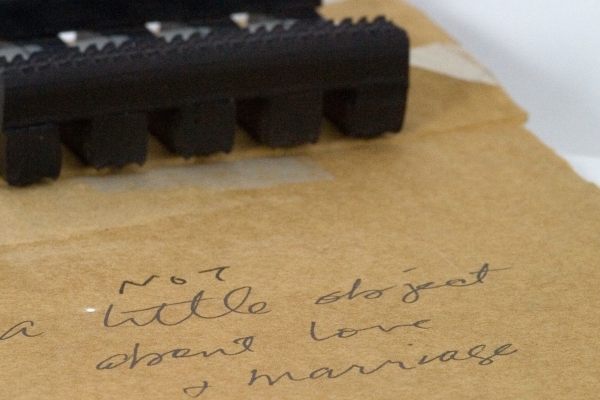
This sample was donated by Richard Wentworth – an artist whose work often manipulates and transforms everyday ‘readymade’ objects and materials, subverting their original function. This sample is a piece of rubber from his 1984 work Guide, which featured a rubber Wellington boot filled with concrete and an embedded child’s version of the same boot. Judging by the shape and texture of this piece, it probably comes from the sole of the boot.
Natural rubber is produced from the milky-white or yellow sap (latex) of the Pará rubber tree, which used to be found only in the Amazon basin and was notoriously difficult to grow anywhere else. Evidence for the use of natural rubber in the service of man dates back to around 1600 BC, when the Olmecs, an ancient civilization of Mexico, used this material to make large rubber balls which archaeologists believe may have been used in games of ritualistic and religious significance.
From that time until the 19th century, natural rubber has had many uses, including the waterproofing of fabrics, but its instability in the face changing temperatures and general fragility made it unsuitable for applications that required durable and reliable materials. Consequently, when leading military figure the Duke of Wellington first commissioned what became known as the Wellington boot, it was made from calfskin leather, not rubber. However, when the process of vulcanisation was discovered in 1839 it became possible to harden natural rubber, making it more durable and suitable for the footwear that was originally used by French farmers, taken up by British soldiers in the trenches of WW1, and transformed into safety boots for use in industry in the post-war period with the addition of steel or plastic toe-reinforcement.
When supplies of natural rubber were cut off in WW1 the search for substitutes began, and the large-scale commercial production of synthetic rubber made from oil became viable. It has since replaced natural rubber in many applications and it’s likely this sample is synthetic rubber.
Sample ID: 74
Add materials you find interesting to your own selections.
Use the  button to select a material and get started.
button to select a material and get started.

